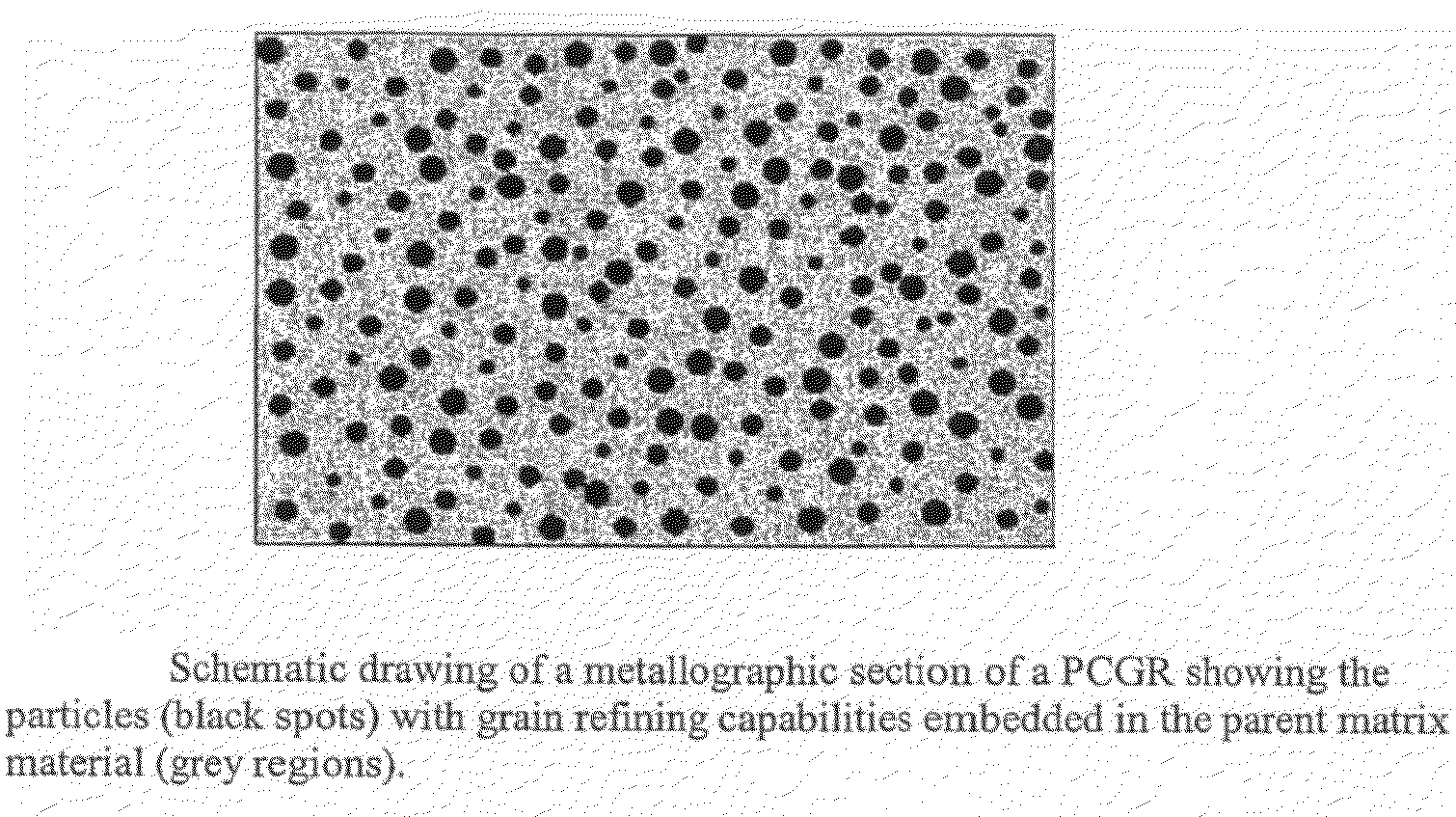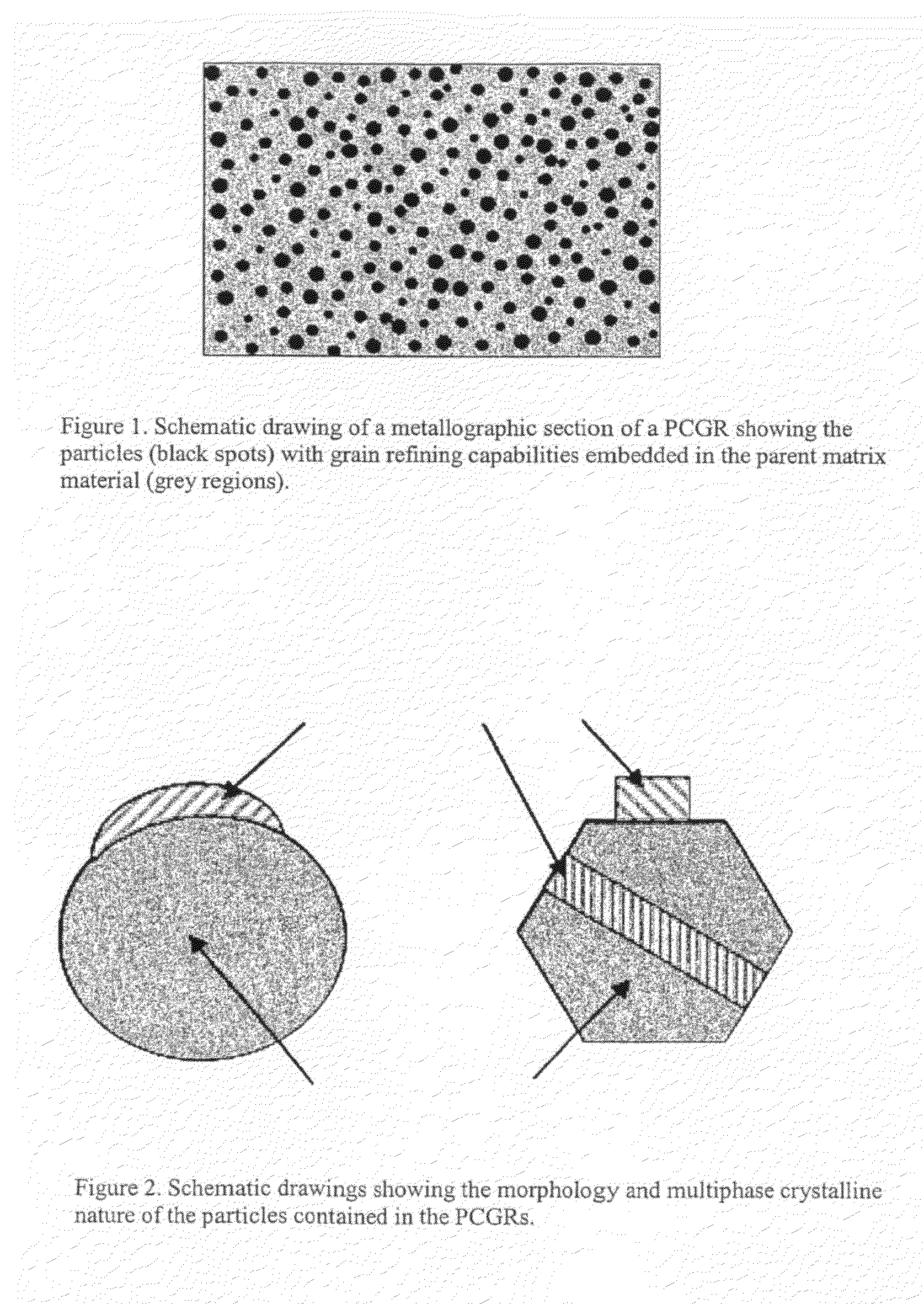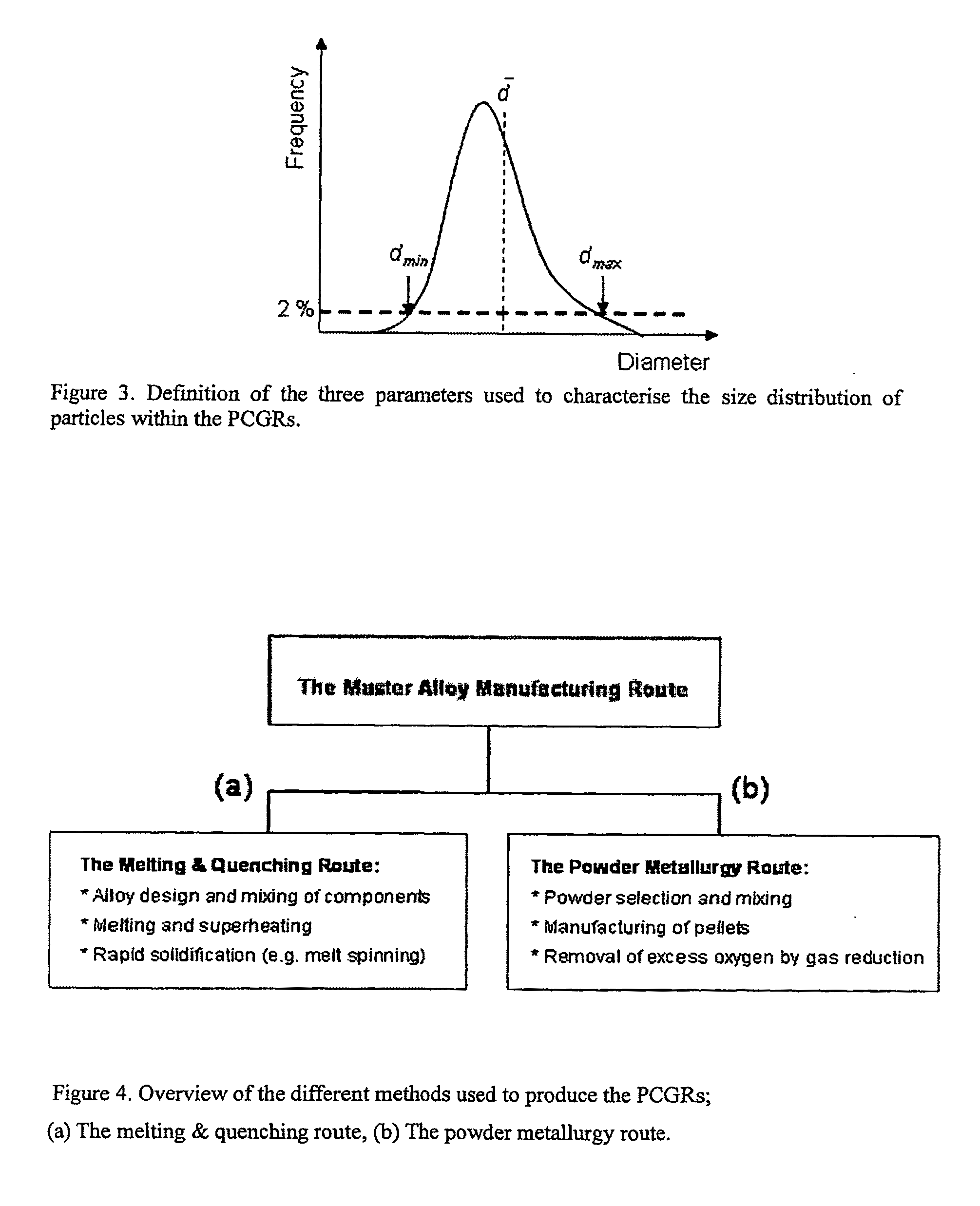Grain Refiners for Steel-Manufacturing Methods and Use
- Summary
- Abstract
- Description
- Claims
- Application Information
AI Technical Summary
Benefits of technology
Problems solved by technology
Method used
Image
Examples
example 1
Manufacturing of a CeS Based PCGR
[0067]The CeS based PCGR shown in FIG. 5 was produced by the melting and quenching route in the laboratory. As a starting point small chips of Ce metal was mixed with FeS to achieve the target sulphur content of about 5% by weight. This mixture was then melted and superheated (˜100° C. above its melting point) in a Ta crucible under the shield of pure argon using induction heating. Following superheating the melt was rapidly quenched against a fast rotating copper wheel. The subsequent metallographic examination of the chilled metal ribbons revealed a very fine dispersion of CeS particles being embedded in a matrix of Ce+Fe, as shown by the optical micrograph in FIG. 5. In this case the mean diameter d of the CeS particles was found to be about 2 μm, with the maximum and minimum particle diameters being within the limits dmaxmin>0.4 μm, respectively.
example 2
Manufacturing of a TimOn Based PCGR
[0068]FIG. 6 is a line scan through a particle of partly reduced ilmenite (FeTiO3) showing formation of a metal shell around an oxide centre. It can be seen that the iron in the ilmenite diffuse out to the grain surface and the titanium is left behind in the form of rutile (TiO2). The starting material is ilmenite pellets made from ilmenite ore grains, oxidized at 800° C. in air, and subsequently reduced at 950° C. in an atmosphere of 99 vol % CO(g) and 1 vol % CO2(g). The reduction was discontinued after 2 hours at a stage where about 50% of the iron contained in the ilmenite was converted to metallic iron to show the transport of iron to the particle surface. On further reduction the outer metallic shell as well as the rutile will increase at the expense of the ilmenite core, giving an end product essentially consisting of a rutile core surrounded by metal.
PUM
| Property | Measurement | Unit |
|---|---|---|
| Temperature | aaaaa | aaaaa |
| Temperature | aaaaa | aaaaa |
| Length | aaaaa | aaaaa |
Abstract
Description
Claims
Application Information
 Login to View More
Login to View More - R&D
- Intellectual Property
- Life Sciences
- Materials
- Tech Scout
- Unparalleled Data Quality
- Higher Quality Content
- 60% Fewer Hallucinations
Browse by: Latest US Patents, China's latest patents, Technical Efficacy Thesaurus, Application Domain, Technology Topic, Popular Technical Reports.
© 2025 PatSnap. All rights reserved.Legal|Privacy policy|Modern Slavery Act Transparency Statement|Sitemap|About US| Contact US: help@patsnap.com



